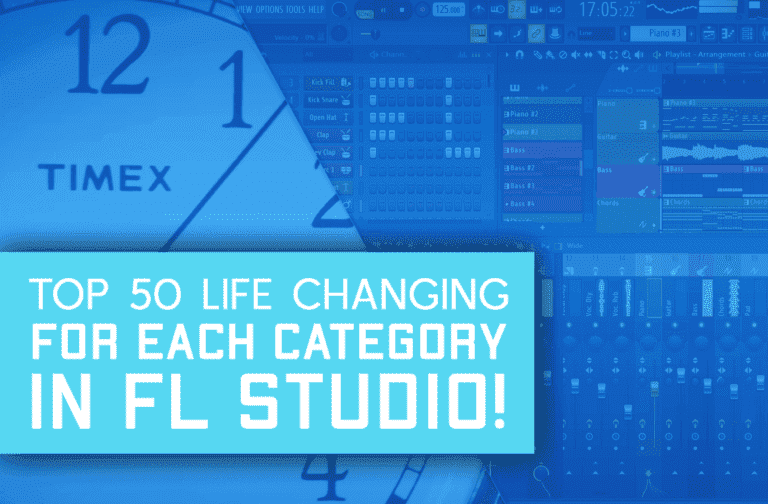Playing an unforgettable DJ set comes down to a combination of song selection and set flow. Often during sets, you’ll see a DJ lose a crowd when they switch to a song that doesn’t quite blend into the mood or feel of the set.
These instances are generally due to mixing songs that aren’t harmonically cohesive. In today’s article, I’m going to explain the importance of harmonic mixing for DJs, and I’ll also show you an easy way to compile and organize your playlists to be harmonically on point.
Why is harmonic mixing necessary?
Western uses a system made up of 12 notes. We use these notes in a variety of combinations to create arrangements of chords and melodies that eventually form a song. Certain notes don’t sound as pleasant together as others, and we refer to this as dissonance.
Much like a guitar that is out of tune or a singer that is off-key with the rest of the choir, our ears and brains find it difficult to enjoy dissonance. Every song has a root key.
The key is essentially the foundational chord of the song and is often played first in a progression. Chords and keys are used as a reference for emotional expression. Certain songs will not work in conjunction with each other as they are composed in keys that conflict, in the same way, that certain emotions conflict with each other.
I like to think of my DJ sets or live performances as short films. To keep the story engaging, you have to make sure that the scenes, moods, and emotions feel fluid and dynamic.
Your song choice determines your storytelling and understanding how to stitch your songs together using keys is an incredibly crucial tool. Mixing harmonically will make sure that the entirety of your set fits with the mood of the dance floor and stays interesting.
How To Mix Harmonically Using beaTunes
I’ve found beaTunes to be an immensely useful program for organizing my sets, especially when I don’t have the time to fully listen through new material in between sets. beaTunes is both affordable and easy to understand which means even beginner DJs can use it.
- Download the beaTunes software from their official website. There are versions for Windows or Mac available and you can also try out the free trial version if you’re unsure about purchasing.
- You choose to route folders in your pc onto the software, or drag and drop folders straight from your desktop for organizing.
- Select the songs that you wish to sort and choose the ‘’Analyze’’ option. beaTunes will run a scan through every selected song’s compositional elements to determine the tonal key of each track.
- beaTunes will organize and display each song by key for you to order within your playlist
How To Mix Harmonically Using Mixed In Key
Mixed In Key is another great program for organizing your songs by key. It features a few extra tools to help you decide how to place your tracks appropriately.
- Purchase and install the Mixed In Key directly from their website.
- Route your specific playlists and music libraries into the Mixed In Key software.
- Select the songs and playlists that you need to organize and select ‘’Analyze’.
- Mixed In Key will give each song a color and specific code that correlates with the Camelot Wheel. The Camelot Wheel is a visual map of song keys that show you which keys transition best with each. There is a Camelot Wheel on Mixed In Key for visual reference.
- Mixed In Key also scans each song for intensity levels and scores them on a scale from 1(calm, ambient) – 10 (loud, highly upbeat). This feature is a great sidekick for the Camelot Wheel and really helps piece sets together nicely.
Organizing your playlists manually.
If you have a solid understanding of key structures and how they apply to your DJ sets, most of the hard work is out of the way. Traktor, Rekordbox, Serato, and most other DJing software will allow you to enter the key, BPM, and other info of your songs manually.
If I’m unsure about a song’s key I generally use Tunebat.com. The site is a search engine that tells you the key to the song you’re looking for. This tool saves me lots of precious time trying to figure out song keys using a piano or my ear.
Are you a producer that’s trying to get your beats out onto some wanting CDJ’s? If so take a look through our quick article on 5 Tips for EDM Producers That Actually Work.
Here we’ll hand you a small but powerful set of tricks you can use to bring your next EDM track to life. Until next time, happy mixing.
Final Thoughts
It is possible to play a set that isn’t harmonically perfect and still sound good. However, it’s very healthy to learn the rules of harmonics to know which ones you’re breaking.
Since learning harmonic mixing I can safely say that my DJ sets have improved in fluidity, and I feel a lot more confident when making song selection choices.
If you’re an aspiring DJ or producer, I highly recommend spending some time learning the ins and outs of this vital area of music. Thanks for taking the time to read through our article on the importance of harmonic mixing.







